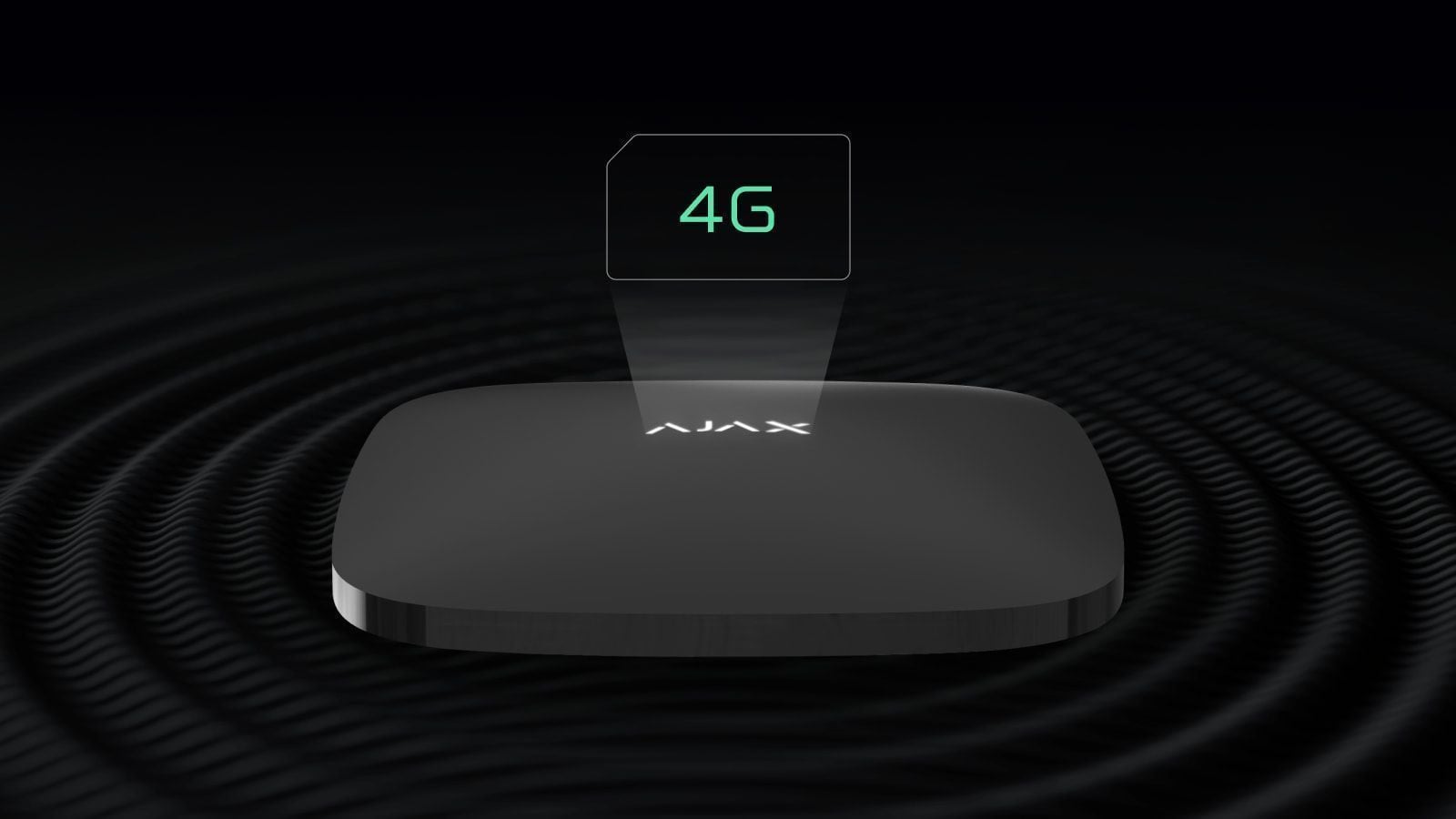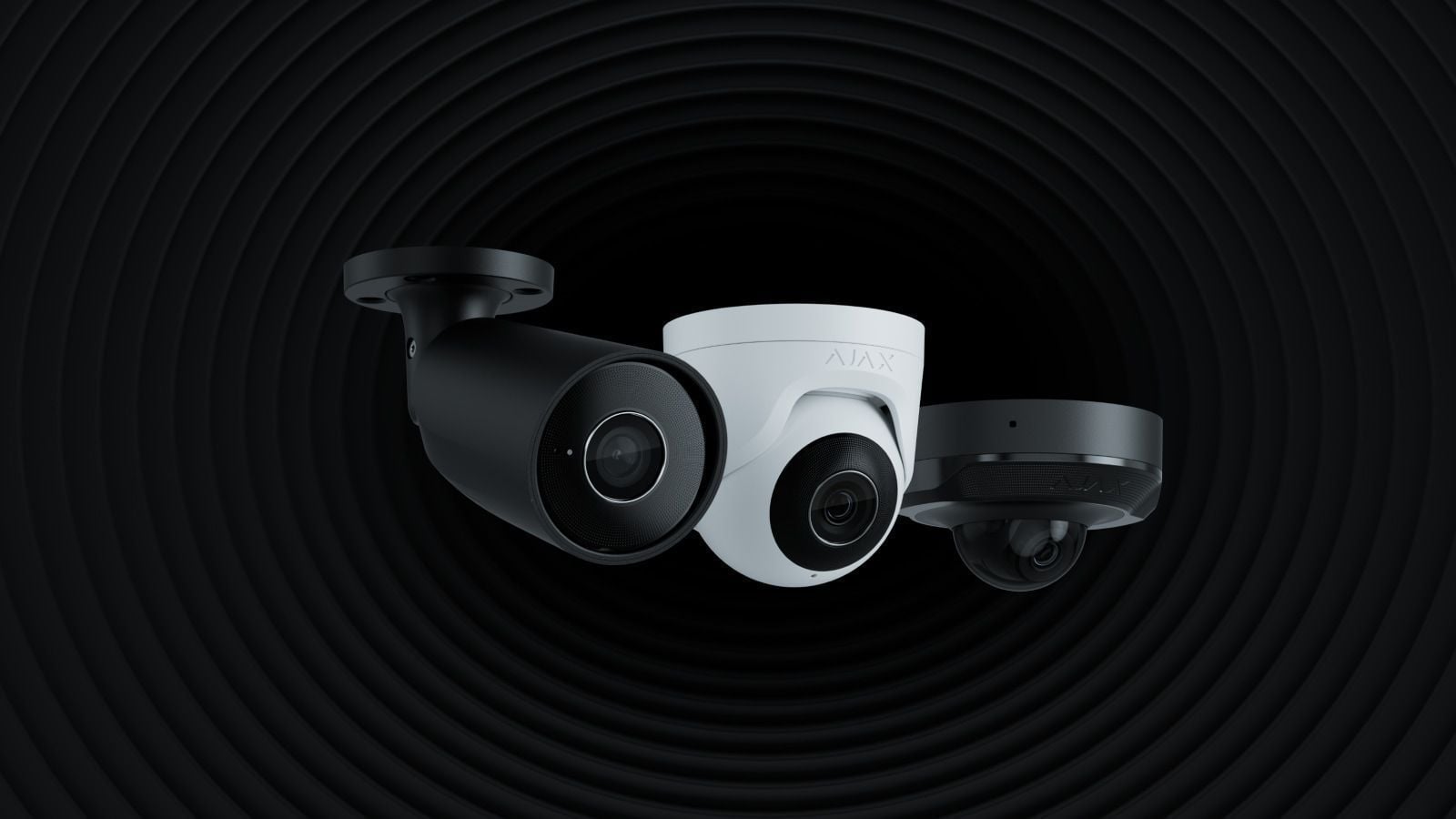The very first hub designed by Ajax Systems gets a significant upgrade — 4G (LTE) network support. The new version of Hub doesn’t replace the previous one. Instead, there are two versions of Hub Jeweller available now. Everything remains unchanged except that the new hub version has a different modem and a few more additional features. Whether you opt for a 2G or 4G version, you’re guaranteed the same top-notch connectivity and reliability.
To avoid confusion, a new hub has different packaging and naming. The regular hub changes its name to Hub (2G) Jeweller, and the new one is named Hub (4G) Jeweller. Both devices are already available to order from Ajax Systems partners.
Navigating the 2G shutdown

Numerous facilities such as small retail outlets or studio apartments require only basic security, and Hub (2G) Jeweller addresses common security requirements. Installing a few detectors and the hub with basic features proves sufficient and perfectly aligns with these specific needs.
As leading technology increasingly relies on 3G and 4G (LTE) networks, supporting 2G becomes economically impractical for cellular service providers. Countries like Germany, the Czech Republic, Norway, Switzerland, and RSA have already experienced the 2G shutdown. Thus, hubs with only 2G support are not relevant for these regions. However, the need for a regular hub does not disappear.
That’s why Ajax Systems expanded the range of hubs by introducing Hub (4G) Jeweller and retained Hub (2G) Jeweller for those who still require it.
Hub (4G) Jeweller works only with 4G (LTE) frequencies. It does not support 2G or 3G networks, USSD codes, and notifying users about alarms via calls.
More than regular
Even though both Hub (2G) Jeweller and Hub (4G) Jeweller are designed to fulfill basic security requirements, they have all the features that both PROs and users appreciate about Ajax devices: easy installation and connection, remote settings, in-app control, and more.
Both Hub (2G) Jeweller and Hub (4G) Jeweller are suitable for various facilities, from small shopping stalls like newspaper stands to larger objects like apartments and offices. The Ajax wireless technology provides up to 2,000 m of radio communication range between a hub and connected devices. The ReX Jeweller range extender can increase the range twofold if required and ensure a stable connection for devices located on different floors or at a long distance.

Reliable, instant, and easy-to-use
Both versions of hubs run on OS Malevich, a proprietary real-time operating system, and efficiently manage 100 devices, accommodating 50 users and supporting 9 security groups. The hub instantly notifies users about alarms and events with informative push notifications. Connected to several internet providers via cellular network and Ethernet, with a built-in backup battery giving up to 15 hours of autonomous operation, both Hub (2G) Jeweller and Hub (4G) Jeweller stay online to protect the facility during power outages. It also features a tamper alarm, notifies about internet connection loss, and automatically changes radio frequency within a band upon detecting radio interference or jamming.
Effortless installation, setup, and maintenance are a great deal of any Ajax device. Both Hub (2G) Jeweller and Hub (4G) Jeweller are ready to operate straight out of the box. All communication modules, power supply, and a backup battery are already installed. With the SmartBracket mounting panel, there is no need to disassemble the enclosure during installation. All necessary fasteners and cables are included in the complete set.

Both hub versions require only the power supply and the internet to start the setup. They are paired with the system by scanning the QR code in Ajax apps. Connecting other Ajax devices, adding users, testing the radio signal, creating groups and scenarios, and even sending a request for connection to CMS — all system settings are always available in intuitive Ajax apps and can be reconfigured remotely.
Automation for greater security and comfort
Both Hub (2G) Jeweller and Hub (4G) Jeweller support arming and disarming an entire facility or security groups and activating Night mode by schedule. They can interact with Ajax automation devices through scenarios, initiating pre-programmed actions automatically by arming/disarming, button presses, detector alarms, or at a scheduled time. The system can activate a smoke machine if an intruder enters the premises, power off the entire facility or separate appliances, manage electric locks, roller shutters, garage doors, and more.
Also, both Hub (2G) Jeweller and Hub (4G) Jeweller support up to 5 automation scenarios by alarm or schedule. However, there’s no limit on scenarios by arming/disarming: the hub supports as many scenarios as there are automation devices in the system. Installers can easily meet specific client requirements with such system flexibility.
What’s new about Hub (4G) Jeweller
Although both Hub (2G) Jeweller and Hub (4G) Jeweller are much alike, the new version stands out thanks to additional features. Hub (4G) Jeweller is compatible with KeyPad Plus Jeweller, which is a wireless touch-sensitive keypad that supports encrypted contactless cards and key fobs. Also, Hub (4G) Jeweller supports access codes for people not registered in the Ajax system, e.g., a visitor, cleaning company, or realtor. We introduced these features to meet the specific needs of our partners and take their user experience with securing and managing access to a site to a whole new level.
How to transfer data from your old Hub (2G) Jeweller to Hub (4G) Jeweller
Upgrading to a new Hub (4G) Jeweller takes minutes. With the data transfer feature, all system settings, including connected devices, scenarios, and users, are transferred from your old Hub (2G) Jeweller to the new one. No programming skills are required — it’s an automatic process within the Ajax app, taking just up to 5 minutes.
Learn more about Hub (4G) Jeweller:
Learn more about Hub (2G) Jeweller:



